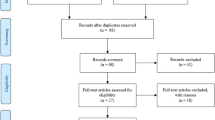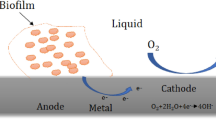Abstract
Chronic acrylamide (ACR) exposure induces peripheral-central axonopathy in occupational workers and laboratory animals, but the underlying mechanisms remain unclear. In this study, we first investigated the effects of ACR on slow axonal transport of neurofilaments in cultured rat dorsal root ganglia (DRG) neurons through live-cell imaging approach. Then for the underlying mechanisms exploration, the protein level of neurofilament subunits, motor proteins kinesin and dynein, and dynamitin subunit of dynactin in DRG neurons were assessed by western blotting and the concentrations of ATP was detected using ATP Assay Kit. The results showed that ACR treatment results in a dose-dependent decrease of slow axonal transport of neurofilaments. Furthermore, ACR intoxication significantly increases the protein levels of the three neurofilament subunits (NF-L, NF-M, NF-H), kinesin, dynein, and dynamitin subunit of dynactin in DRG neurons. In addition, ATP level decreased significantly in ACR-treated DRG neurons. Our findings indicate that ACR exposure retards slow axonal transport of NF-M, and suggest that the increase of neurofilament cargoes, motor proteins, dynamitin of dynactin, and the inadequate ATP supply contribute to the ACR-induced retardation of slow axonal transport.






Similar content being viewed by others
Abbreviations
- ACR:
-
Acrylamide
- DRG:
-
Dorsal root ganglia
- NF:
-
Neurofilament
- NF-H:
-
Neurofilament heavy subunit
- NF-M:
-
Neurofilament middle subunit
- NF-L:
-
Neurofilament light subunit
- ATP:
-
Adenosine triphosphate
- KHC:
-
Kinesin heavy chain
- NGF:
-
Nerve growth factor
- IPP:
-
Image-pro plus
- PBS:
-
Phosphate-buffered saline
- GAPDH:
-
Glyceraldehyde-3-phosphate dehydrogenase
References
Pennisi M, Malaguarnera G, Puglisi V, Vinciguerra L, Vacante M, Malaguarnera M (2013) Neurotoxicity of acrylamide in exposed workers. Int J Environ Res Public Health 10:3843–3854
Lehning E, Balaban C, Ross J, Reid M, LoPachin R (2002) Acrylamide neuropathy I. Spatiotemporal characteristics of nerve cell damage in rat cerebellum. Neurotoxicology 23:397–414
LoPachin RM, Balaban CD, Ross JF (2003) Acrylamide axonopathy revisited. Toxicol Appl Pharmacol 188:135–153
Schaumburg HH, Spencer PS (1976) The neurology and neuropathology of the occupational neuropathies. J Occup Med 18:739–742
Yu S, Son F, Yu J, Zhao X, Yu L, Li G, Xie K (2006) Acrylamide alters cytoskeletal protein level in rat sciatic nerves. Neurochem Res 31:1197–1204
Miller CCJ, Ackerley S, Brownlees J, Grierson AJ, Jacobsen NJO, Thornhill P (2002) Axonal transport of neurofilaments in normal and disease states. Cell Mol Life Sci 59:323–330
Brown A, Wang L, Jung P (2005) Stochastic simulation of neurofilament transport in axons: the “stop-and-go” hypothesis. Mol Biol Cell 16:4243–4255
Trivedi N, Jung P, Brown A (2007) Neurofilaments switch between distinct mobile and stationary states during their transport along axons. J Neurosci 27:507–516
Yan Y, Brown A (2005) Neurofilament polymer transport in axons. J Neurosci 25:7014–7021
Brown A (2003) Axonal transport of membranous and nonmembranous cargoes: a unified perspective. J Cell Biol 160:817–821
Yuan A, Rao MV, Veeranna Nixon RA (2012) Neurofilaments at a glance. J Cell Sci 125:3257–3263
Chevalier-Larsen E, Holzbaur EL (2006) Axonal transport and neurodegenerative disease. Biochim Biophys Acta 1762:1094–1108
Bradley W, Williams M (1973) Axoplasmic flow in axonal neuropathies. I. Axoplasmic flow in cats with toxic neuropathies. Brain 96:235–246
Gold BG, Griffin JW, Price DL (1985) Slow axonal transport in acrylamide neuropathy: different abnormalities produced by single-dose and continuous administration. J Neurosci 5:1755–1768
Pleasure DE, Mishler KC, Engel WK (1969) Axonal transport of proteins in experimental neuropathies. Science 166:524–525
Sabri MI, Spencer PS (1990) Acrylamide impairs fast and slow axonal transport in rat optic system. Neurochem Res 15:603–608
Sidenius P, Jakobsen J (1983) Anterograde axonal transport in rats during intoxication with acrylamide. J Neurochem 40:697–704
Brown A (2003) Live-cell imaging of slow axonal transport in cultured neurons. Methods Cell Biol 71:305–323
Han XY, Cheng D, Song FY, Zeng T, An LH, Xie KQ (2014) Decelerated transport and its mechanism of 2,5-hexanedione on middle-molecular-weight neurofilament in rat dorsal root ganglia cells. Neuroscience 269:192–198
Patterson GH, Lippincott-Schwartz J (2002) Photoactivatable green fluorescent protein. Biophys J 82:492a–492a
Patterson GH, Lippincott-Schwartz J (2002) A photoactivatable GFP for selective photolabeling of proteins and cells. Science 297:1873–1877
Flynn KC, Pak CW, Shaw AE, Bradke F, Bamburg JR (2009) Growth cone-like waves transport actin and promote axonogenesis and neurite branching. Dev Neurobiol 69:761–779
Spencer P, Schaumburg H (1974) A review of acrylamide neurotoxicity. Part I. Properties, uses and human exposure. Can J Neurol Sci 1:143–150
Duncan JE, Goldstein LSB (2006) The genetics of axonal transport and axonal transport disorders. PLoS Genet 2:1275–1284
Gennerich A, Vale RD (2009) Walking the walk: how kinesin and dynein coordinate their steps. Curr Opin Cell Biol 21:59–67
Jacomy H, Zhu Q, Couillard-Despres S, Beaulieu JM, Julien JP (1999) Disruption of type IV intermediate filament network in mice lacking the neurofilament medium and heavy subunits. J Neurochem 73:972–984
Julien J-P (1999) Neurofilament functions in health and disease. Curr Opin Neurobiol 9:554–560
Zhang L, Gavin T, DeCaprio AP, LoPachin RM (2010) Gamma-diketone axonopathy: analyses of cytoskeletal motors and highways in CNS myelinated axons. Toxicol Sci 117:180–189
Barry DM, Millecamps S, Julien JP, Garcia ML (2007) New movements in neurofilament transport, turnover and disease. Exp Cell Res 313:2110–2120
Lin WW, Friedman MA, Wang X-F, Abou-Donia MB (2000) Acrylamide-regulated neurofilament expression in rat pheochromocytoma cells. Brain Res 852:294–304
Uchida A, Alami NH, Brown A (2009) Tight functional coupling of kinesin-1A and dynein motors in the bidirectional transport of neurofilaments. Mol Biol Cell 20:4997–5006
Martenson CH, Odom A, Sheetz MP, Graham DG (1995) The effect of acrylamide and other sulfhydryl alkylators on the ability of dynein and kinesin to translocate microtubules in vitro. Toxicol Appl Pharmacol 133:73–81
Sickles DW, Sperry AO, Testino A, Friedman M (2007) Acrylamide effects on kinesin-related proteins of the mitotic/meiotic spindle. Toxicol Appl Pharmacol 222:111–121
Sickles D, Brady S, Testino A, Friedman M, Wrenn R (1996) Direct effect of the neurotoxicant acrylamide on kinesin-based microtubule motility. J Neurosci Res 46:7–17
Friedman M, Zeiger E, Marron ID, Sickles D (2008) Inhibition of rat testicular nuclear kinesins (krp2; KIFC5A) by acrylamide as a basis for establishing a genotoxicity threshold. J Agric Food Chem 56:6024–6030
Schroer TA, Schnapp BJ, Reese TS, Sheetz MP (1988) The role of kinesin and other soluble factors in organelle movement along microtubules. J Cell Biol 107:1785–1792
Brady ST, Pfister KK, Bloom GS (1990) A monoclonal antibody against kinesin inhibits both anterograde and retrograde fast axonal transport in squid axoplasm. Proc Natl Acad Sci USA 87:1061–1065
Stenoien DL, Brady ST (1997) Immunochemical analysis of kinesin light chain function. Mol Biol Cell 8:675–689
Deacon SW, Serpinskaya AS, Vaughan PS, Lopez Fanarraga M, Vernos I, Vaughan KT, Gelfand VI (2003) Dynactin is required for bidirectional organelle transport. J Cell Biol 160:297–301
Melkonian KA, Maier KC, Godfrey JE, Rodgers M, Schroer TA (2007) Mechanism of dynamitin-mediated disruption of dynactin. J Biol Chem 282:19355–19364
Kwinter DM, Lo K, Mafi P, Silverman MA (2009) Dynactin regulates bidirectional transport of dense-core vesicles in the axon and dendrites of cultured hippocampal neurons. Neuroscience 162:1001–1010
Valetti C, Wetzel DM, Schrader M, Hasbani MJ, Gill SR, Kreis TE, Schroer TA (1999) Role of dynactin in endocytic Traffic: effects of dynamitin overexpression and colocalization with CLIP-170. Mol Biol Cell 10:4107–4120
Echeverri CJ, Paschal BM, Vaughan KT, VaUee RB (1996) Molecular characterization of the 50-kD subunit of dynactin reveals function for the complex in chromosome alignment and spindle organization during mitosis. J Cell Biol 132:617–633
Wang ZX, Tan L, Yu JT (2014) Axonal transport defects in Alzheimer’s disease. Mol Neurobiol. doi:10.1007/s12035-014-8810-x
Sakama R, Hiruma H, Kawakami T (2003) Effects of extracellular atp on axonal transport in cultured mouse dorsal root ganglion neurons. Neuroscience 121:531–535
Tanaka F, Ikenaka K, Sobue G (2011) Role of axonal transport in ALS. Clin Neurol 51:1189–1191
Acknowledgments
The authors gratefully acknowledge Dr. Anthony Brown (Ohio State University, Columbus, USA) for his generous gifts of pPA-GFP-NF-M plasmid and DsRed plasmid. The authors also thank Paula McKinney, Niraj Trivedi, Neal (Ohio State University) for technical assistance. This study was supported by the National Science Foundation of China (30872134).
Author information
Authors and Affiliations
Corresponding author
Rights and permissions
About this article
Cite this article
An, L., Li, G., Si, J. et al. Acrylamide Retards the Slow Axonal Transport of Neurofilaments in Rat Cultured Dorsal Root Ganglia Neurons and the Corresponding Mechanisms. Neurochem Res 41, 1000–1009 (2016). https://doi.org/10.1007/s11064-015-1782-z
Received:
Revised:
Accepted:
Published:
Issue Date:
DOI: https://doi.org/10.1007/s11064-015-1782-z




